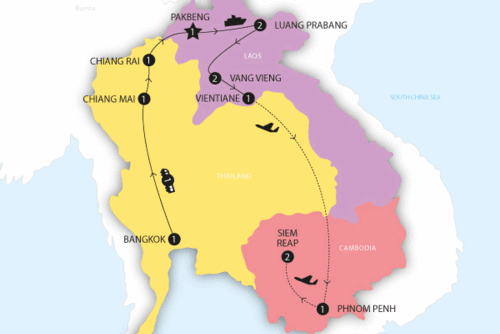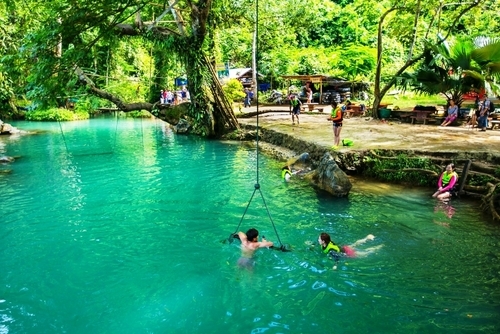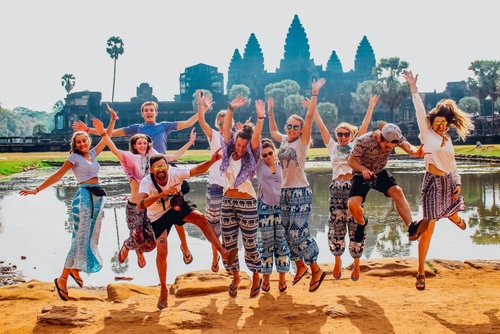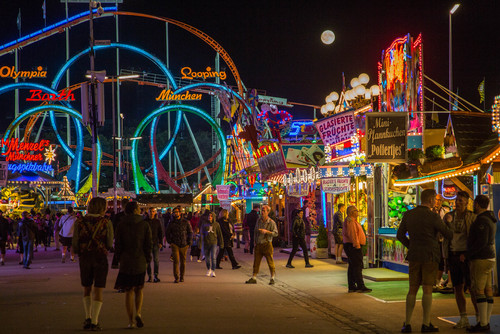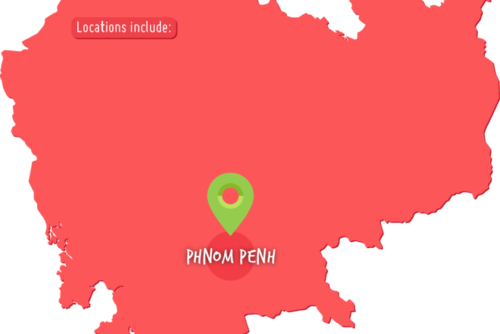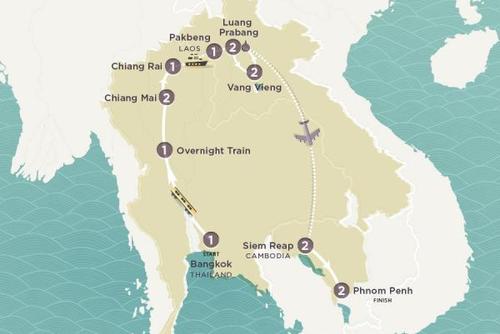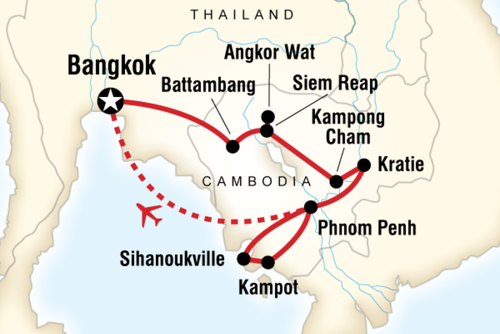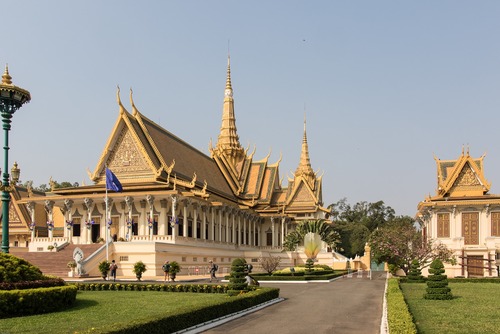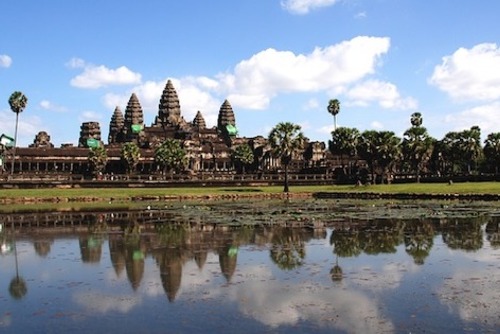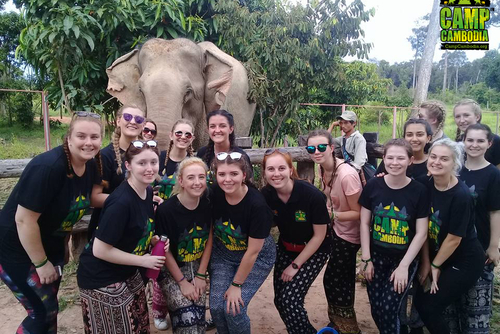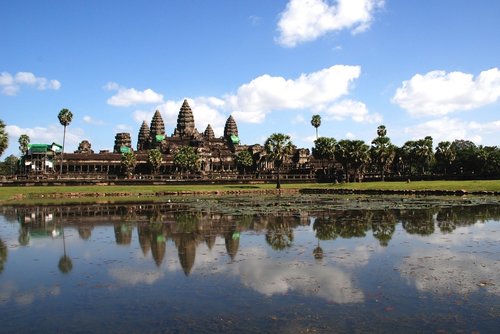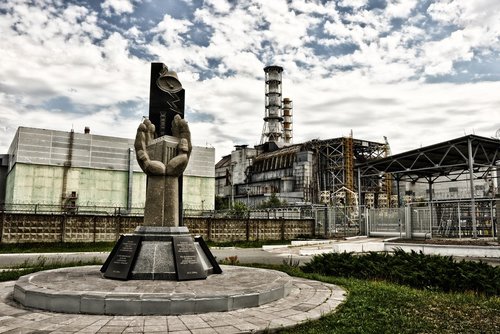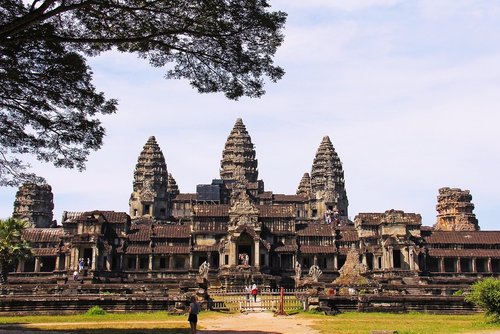The mass genocide Cambodia suffered under the rule of the Khmer Rouge was completely unknown to him. Whilst UK schools teach about The Holocaust and western crimes against humanity, the events that took place in this period across Cambodia are absent from the syllabus.
With so many incredible tourist destinations in Cambodia like the ancient temples of Siem Reap, adding the harrowing Killing Fields to your Cambodia itinerary might seem like something you don't necessarily want to do. But if you are wondering - "should I visit the Killing Fields in Phnom Penh?" - the simple answer is YES!
Below, Eibhlis shares his experience of this harrowing destination and the importance of visiting Cambodia's Killing Fields.
A Guide to Visiting The Killing Fields
We woke early at our hotel in Phnom Penh to begin our trip by tuktuk to Choeung Ek (The Killing Fields). For anyone planning to visit, the site opens at 7:30am and remains quiet for a few hours - making it an ideal time to go in order to reflect and take in the information. Arriving early also ensures that you beat the midday heat. From our hotel, we paid $30 for a day's transportation with a tuktuk driver.
I would really recommend looking into this as we had the same driver who was happy to help us and show us places of interest along the way. Alternatively, using the Grab app you may find cheaper one-way fares. Some Cambodia tours also include The Killing Fields in their itinerary, if you don't mind an organised experience.
Entry cost $6 and included an audio guide which is an essential to truly understand the site and background of the horrors. This said, parts of the guide are extremely distressing; some may want to heed the warnings on the audio and skip certain sections.
The Fields are in no way suitable for children and although I didn't notice an advised minimum age, signs upon entry to S21 suggested visitors be at least 14 years old.
Also out of respect it is important to dress modestly in order to enter: no shorts for men or women and no exposed backs or shoulders.
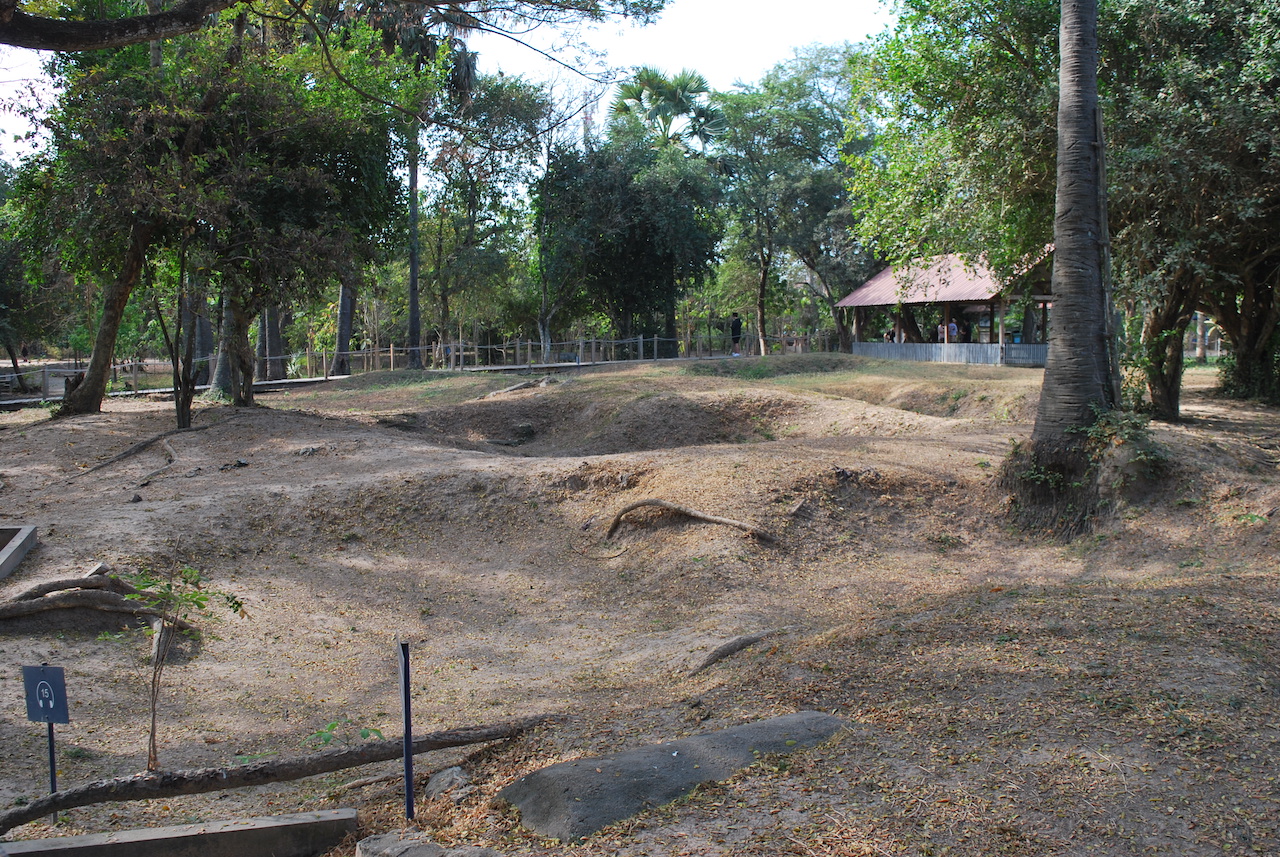
The undulating 6 acres is broken up by a stupa, boardwalk, toilet facilities and the lake. The craters in the ground are far from a natural phenomenon, these mark the spots of mass graves.
Casting your eyes to the floor, you can still catch glimpses of scraps of clothing and shards of bones - which regularly appear at the surface as elements erode the ground.
Despite carers of the Fields routinely collecting these to put to rest, it is important that you watch your step and do not pick up anything you find on the floor.
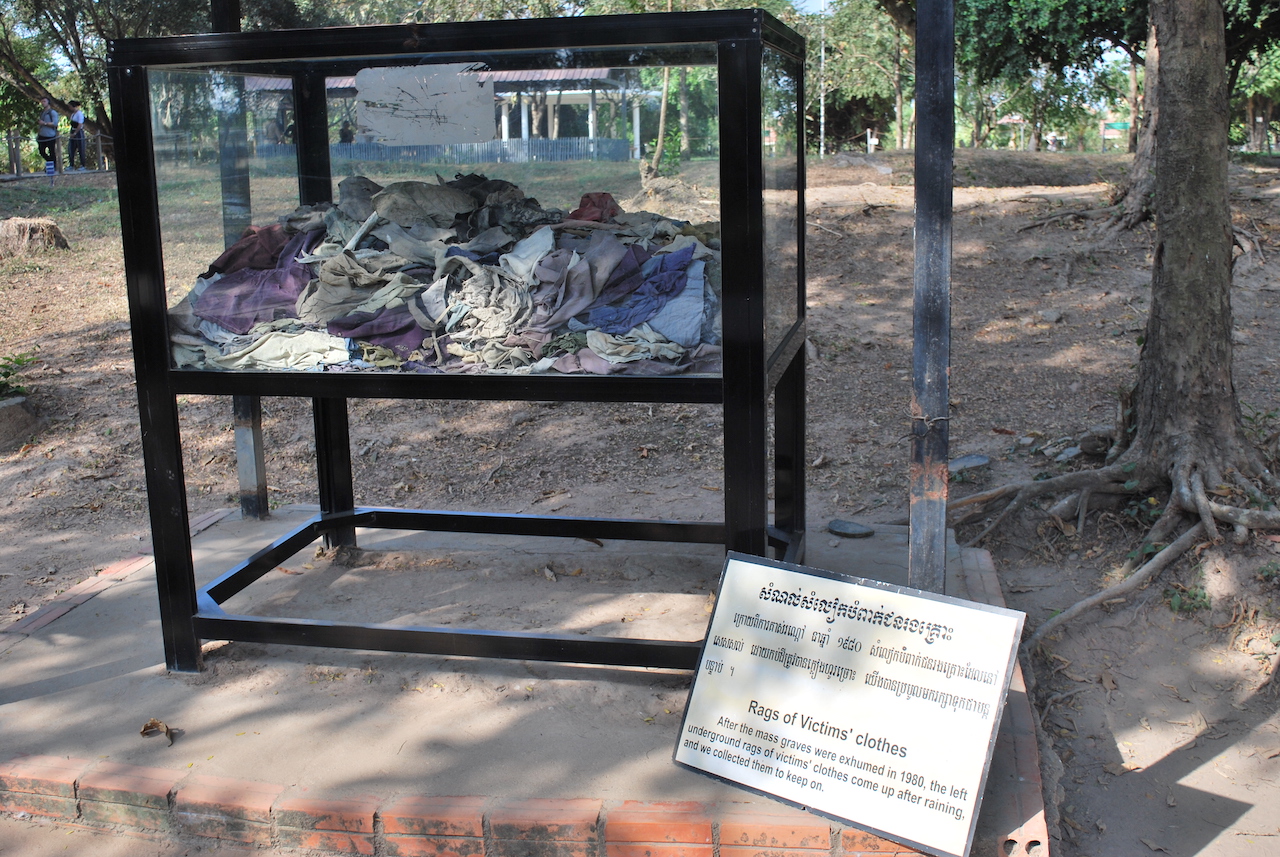
The Fields are dotted with what appear to be birdhouses. In reality these are spirit houses; a Cambodian tradition to house lost and tortured souls. It seems at Choeung Ek the dead are not yet ready to rest.
Following the audio guide around numbered areas of the site, the whole tour should take approximately an hour and a half. There are plenty of optional pieces though that you may choose to listen to, which the guide encourages you to do sat on one of the benches overlooking the lake.
Should you wish to pause the tour to take a break this is also a nice spot to do so. The audio tour finishes at the stupa in the centre of the Fields, where hundreds of skulls rest. Here, you can pay your respects by removing your shoes and lighting incense. The guide encourages prayers of any religion.
Do not underestimate how emotionally draining this tour can be, many advise against visiting alone due to this. Visiting both S21 and Choeung Ek Killing Fields in one day is also a topic of controversy, although this is exactly what we did.
The journey to S21 took around 30 minutes via tuktuk which was a good way to take in some of Phnom Penh's more secluded suburbs. Tickets are purchased at the front stands and cost $8 for an adult ticket including an audio guide.
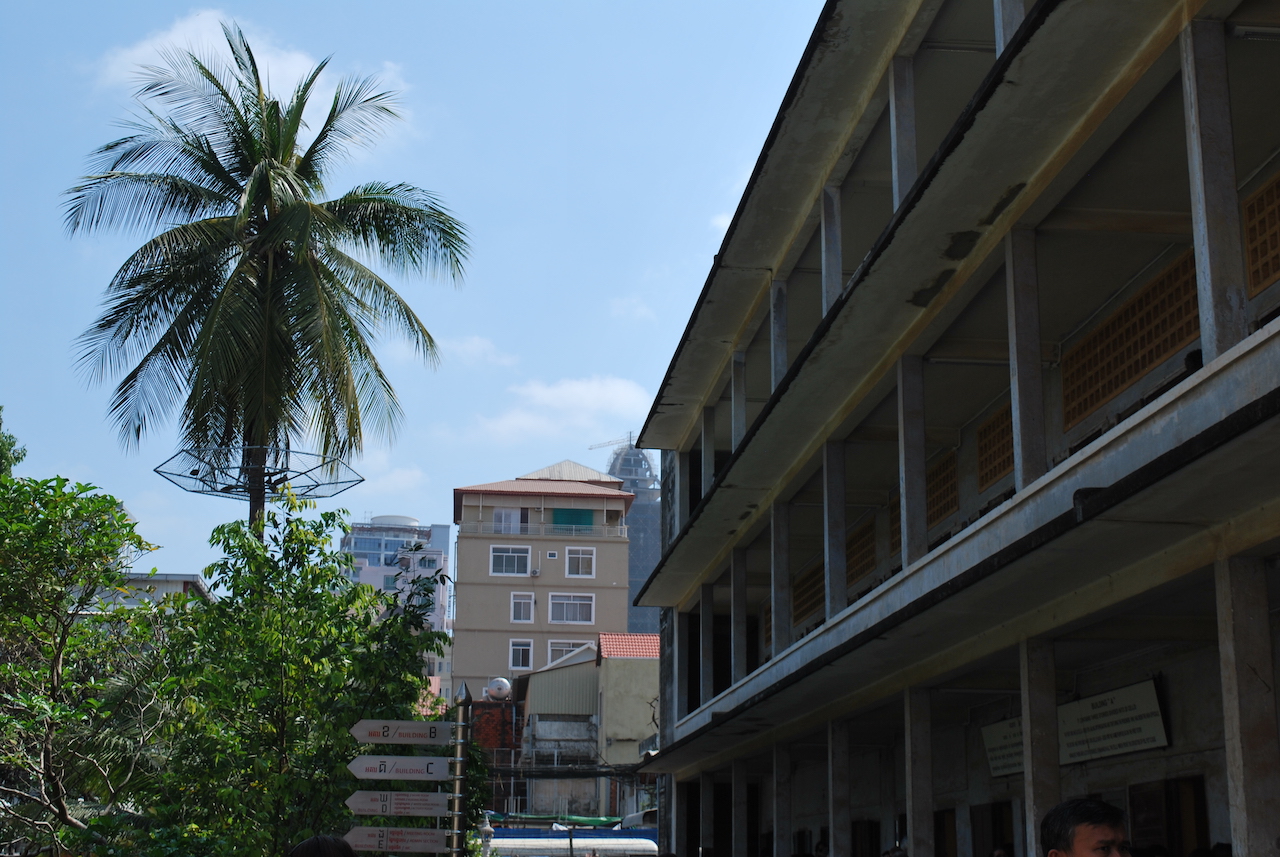
Once again, a modest dress code is required, although clothing can be rented with a deposit at the gates.
Once a school, S21 was transformed into a notorious prison of torture and brutality under the Khmer Rouge's regime. The experience differs from that of the Killing Fields in that the environment is more of a traditional museum. The audio guide takes you through each building with an explanation and options for further information or haunting stories.
The Khmer Rouge carefully documented the prisoners that entered S21 - taking biographies and photos that are now displayed on meters of boards. Women and children, again, were not safe from the torturing and murders.
A number of foreigners were also caught up in the cold-blooded establishment, including men from New Zealand and England. Endless rows of eyes follow your movement through building two, their faces are pictures of stoicism and bewilderment.
The accompanying audio tour is beyond chilling and spares no details. By the final block many visitors were in tears or very close to it, myself included.
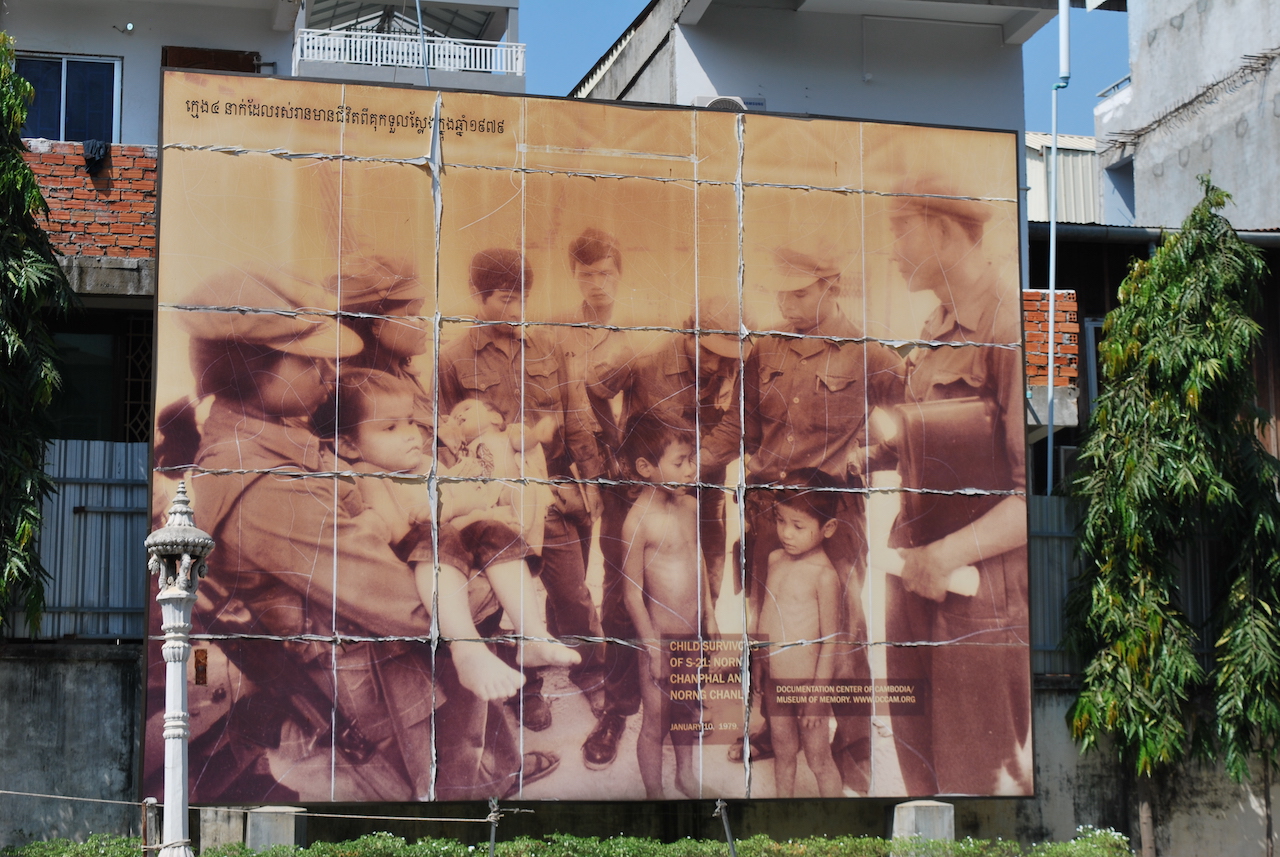
Exiting the block and following the path back to the gates, you are met by stalls selling souvenirs.
Walking over, I examined the cover of a book only to have the heart-breaking realization that the contents was about the man working the stall. The book was titled THE MYSTERY OF THE BOY AT S21. Norng Chan Phal was only 8 years when his mother was arrested and brought to the prison, with himself and his younger brother alongside her.
Separated from her, Phal became responsible for not only his brother but also the care of other children that had been taken from their mothers - including a 4-month-old baby.
As the Vietnamese army approached the prison, Khmer Rouge guards and staff were ordered to evacuate and dispose of any remaining prisoners. Bravely hiding himself and the younger children underneath piles of dirty laundry, Phal tricked the guards and saved their lives for the time being.
The account of an experience of such tragedy makes for a difficult read, but is undoubtedly an essential element of a visit to the prison. Phal himself is an incredible man, who even rushed to reassure me with accounts of courts and justice when he saw the impact our discussion was having.
It was an honour to meet such a courageous individual and I would recommend that anyone visiting buy a book after a trip to either of these sites, you need to ensure that you have some time to process all the information and emotions that inevitably come with it.
Both S21 and Choeung Ek Killing Fields remain growing tourist attractions, which brings worldwide education of the evils of the Khmer Rouge and contributes positively to Cambodia's economy.
The Khmer Rouge Tribunal additionally uses the evidence found at the two in its ongoing prosecution of Pol Pot's party. The aftermath of the suffering is still extremely fresh and the blow to families, industries and the economy remains high despite progressions made.
It is easy to feel detached from the incident as an individual of western origin, but a visit to this terrifying destination will reveal that the influence and ignorance of western countries played a significant part in the tragedies.
There are lots of things to know before visiting Cambodia and you do need to research thoroughly before departing. S21 and Choeung Ek Killing Fields are perhaps two of the most devastating but eye-opening places I will ever visit. But I say with ease that no tourist in Cambodia should miss them.
Have you ever visited Cambodia? Do you have any experiences or advice to share? Let me know in the comments section below.
By Eibhlis Gale-Coleman


